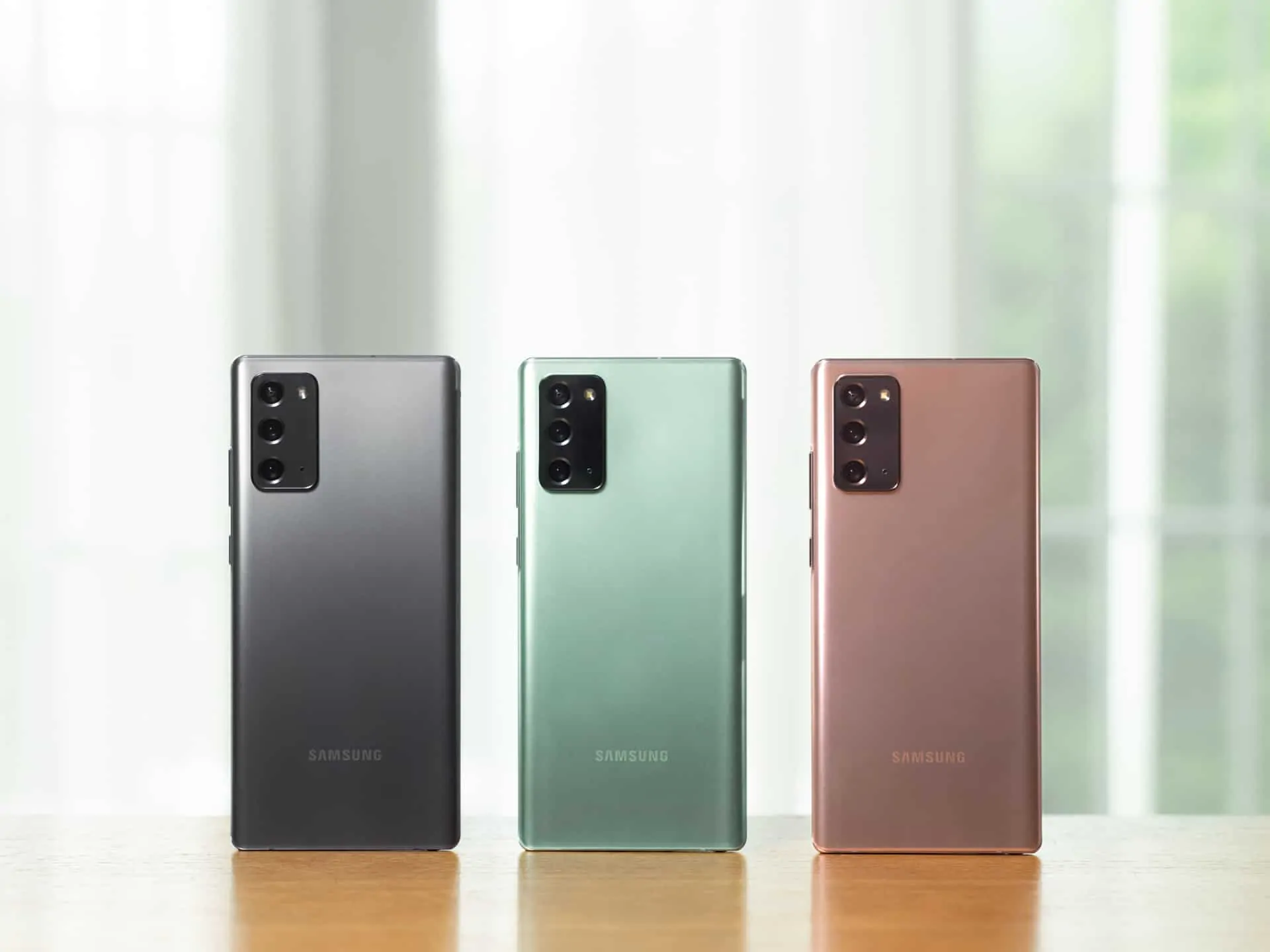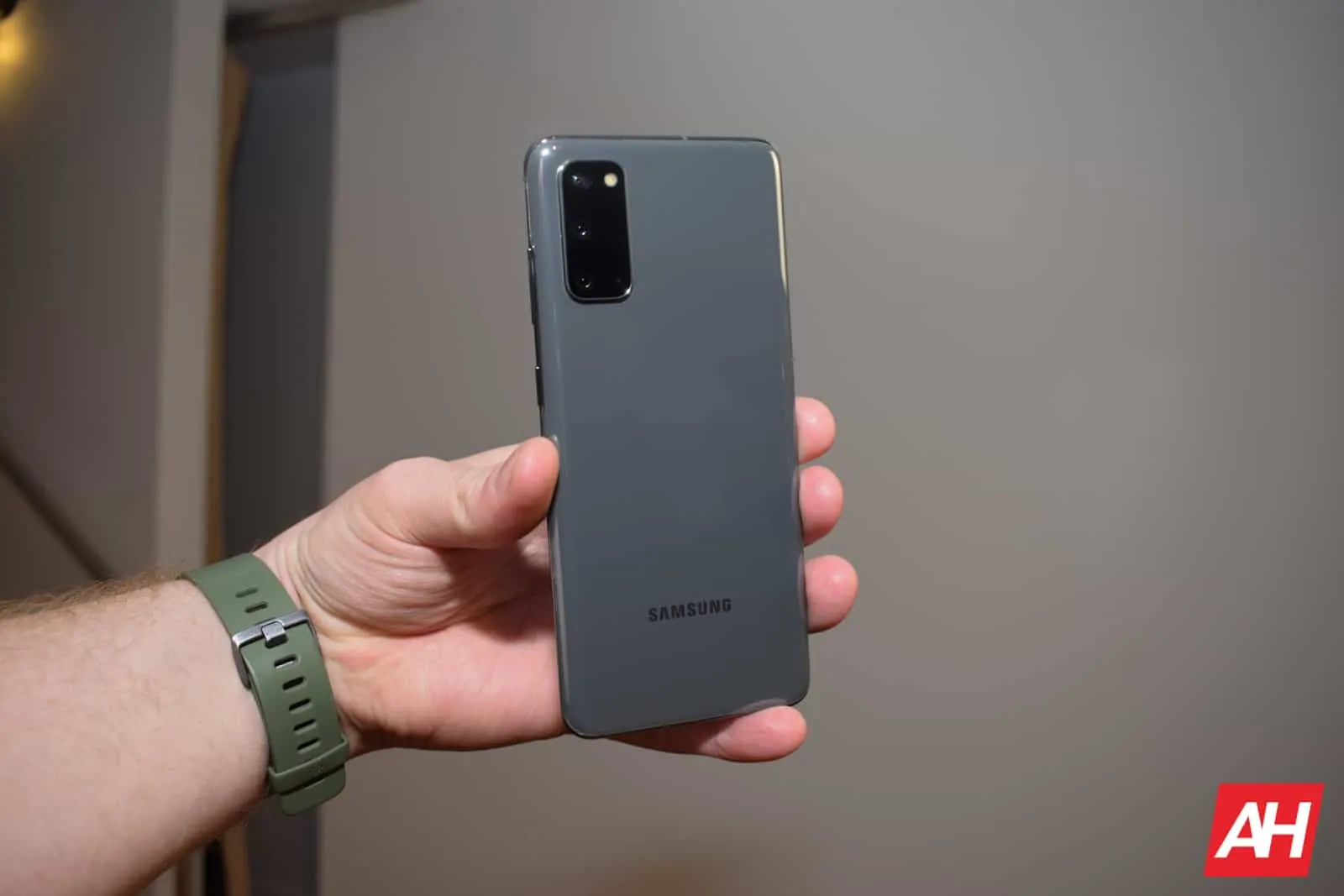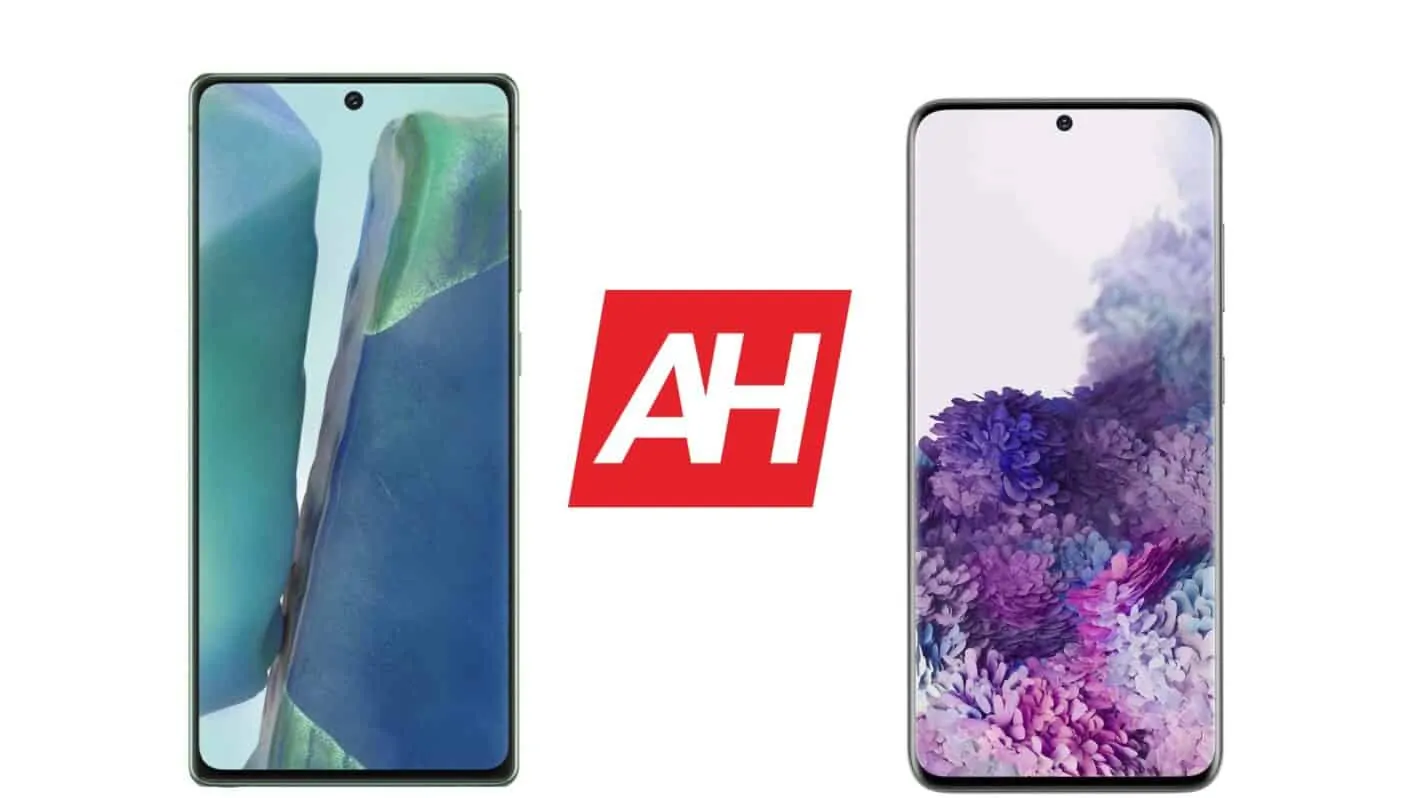Samsung introduced two very different Galaxy Note 20 handsets on August 5. The Galaxy Note 20 is inferior to the ‘Ultra’ model, and some would say quite a bit. In any case, it’s time to compare the vanilla Samsung Galaxy Note 20 vs Galaxy S20, a model Samsung introduced earlier this year.
Both of these phones are considered to be the company’s flagships. The question is, is the Galaxy Note 20 worth getting over the Galaxy S20? That is probably something you’ve been trying to figure out, as the Galaxy S20 is now more affordable than the Galaxy Note 20 (depending on where you get it, though).
Well, that’s a question we’ll try to answer by comparing the two devices across a number of categories. As per usual, we’ll kick things off by listing their specifications. Following that, we’ll move to the design, display, performance, and other aspects of the two devices. That being said, let’s kick off the Samsung Galaxy Note 20 vs Galaxy S20 comparison.
Specs
| Galaxy Note 20 | Samsung Galaxy S20 | |
| Screen size | 6.7-inch fullHD+ display (Dynamic OLED, 60Hz) | 6.2-inch WQHD+ Dynamic AMOLED display (120Hz) |
| Screen resolution | 2400 x 1080 | 3200 x 1440 |
| SoC | Qualcomm Snapdragon 865 / Exynos 990 | Qualcomm Snapdragon 865 / Exynos 990 |
| RAM | 8GB | 12GB (LPDDR5) |
| Storage | 128GB; Non-Expandable | 128GB; Expandable up to 1TB |
| Rear cameras | 12MP (f/1.8 aperture, 1.8um pixel size, 79-degree FoV) 64MP (telephoto, 76-degree FoV, 0.8um pixel size, 3x optical zoom) 12MP (ultrawide, 1.4um pixel size, f/2.2 aperture, 120-degree FoV) |
12MP (f/1.8 aperture, 79-degree angle lens) 64MP (f/2.0 aperture, 76-degree angle lens) 12MP(f/2.2 aperture, ultrawide 120-degree lens) |
| Front cameras | 10MP (f/2.2 aperture, 26mm wide-angle lens, 1.22um pixel size) | 10MP (f/2.2 aperture, 80-degree angle lens) |
| Battery | 4,300mAh, Non-Removable, 25W Fast Battery Charging (USB-PD 2.0), 15W Qi wireless charging, 4.5W reverse wireless charging | 4,000mAh, non-removable, 25W fast battery charging, fast wireless charging, reverse charging |
| Dimensions | 161.6 x 75.2 x 8.3mm | 152 x 68 x 7.9mm |
| Weight | 192g (Sub6), 194g (mmWave | 164 grams |
| Connectivity | 5G, LTE, NFC, Bluetooth 5.1, Wi-Fi, USB Type-C | LTE, 5G, NFC, Bluetooth 5.0, Wi-Fi, USB Type-C |
| Security | In-display fingerprint scanner (ultrasonic) | In-display fingerprint scanner (ultrasonic) |
| OS | Android 10 One UI |
Android 10 Samsung One UI 2 |
| Price | $999 | $999 |
| Buy | Samsung (not yet available) | Samsung |
Samsung Galaxy Note 20 vs Samsung Galaxy S20: Design
When it comes to the design, well, they’re both similar and different. The two devices do look somewhat similar when you look at them, but they’re also quite different at the same time. The build materials are different, and so is the size. On top of that, the in-hand feel is also considerably different.
The Galaxy Note 20 comes with a frame made out of metal, and a plastic back. The Galaxy S20, on the other hand, includes a glass back. The Galaxy S20 also offers less sharp corners than its sibling, and it’s considerably smaller and lighter (192 grams vs 163 grams). The Galaxy Note 10 is around 10mm taller, 6mm wider, and a bit thicker as well. It’s definitely not a phone that is meant to be used with one hand.

Both devices offer a curved back side. The Galaxy Note 20 sports a flat display, while the display on the Galaxy S20 is slightly curved. The rear camera modules are placed in the same spot on both devices, but look quite a bit different. A single display camera hole is a part of both displays.
The Galaxy Note 20 also has the S Pen stylus included on the inside, and accessible through the bottom, while the Galaxy S20 does not. Both of these devices look quite sleek, there’s no doubt about it. The Galaxy S20 is a more premium-built phone, as it doesn’t really include plastic on the back. If you prefer larger phones and a flat display, however, the Galaxy Note 20 may be a better choice for you.
Samsung Galaxy Note 20 vs Samsung Galaxy S20: Display
The Galaxy Note 20 does include a larger display. It comes with a 6.7-inch fullHD+ (2400 x 1080) Super AMOLED display. The Galaxy S20, on the other hand, sports a 6.2-inch QHD+ (3200 x 1440) Dynamic AMOLED 2X panel. The panel on the Galaxy S20 offers a high refresh rate, at 120Hz, while the Galaxy Note 20’s defaults to 60Hz.
Both displays do support HDR10+ content, by the way. The Galaxy Note 20 is protected by the Gorilla Glass 5, while the Galaxy S20 comes with Gorilla Glass 6. All in all, it’s difficult to say the Galaxy S20 doesn’t have a better panel. I mean, both panels look great in real life, but that refresh rate advantage is noticeable.
The difference in resolution is really difficult to spot, though. If you use a 120Hz refresh rate, you’ll have to default to fullHD+ either way, at least for the time being. Both displays offer really vivid colors, deep blacks, and look great overall. Viewing angles on them are also great. The Galaxy S20 does have an edge here, though, its refresh rate is really nice to have.
Samsung Galaxy Note 20 vs Samsung Galaxy S20: Performance
In terms of performance, both of these smartphones deliver. You’ll get really smooth performance with both phones, and that was to be expected. They’re both flagship-grade phones, with extremely powerful chipsets, and plenty of RAM to work with. Samsung did a great job optimizing its Android skin as well, this time around.
Both of these phones can handle some heavy gaming, with high settings. They also handle everyday tasks without a problem. I mean, an occasional hiccup is possible, but that’s not unusual. They can multitask really fast, while they do open apps and games really fast as well. The Galaxy Note 20 is a bit more powerful on paper, and it has less of a refresh rate to push, though.
If performance is what you’re after, these two phones are on par, at least for the time being. No matter which of the two you decide to get, you’ll get excellent performance, so that definitely shouldn’t be a deciding factor. Other categories should make a difference, and make your choice easier.
Samsung Galaxy Note 20 vs Samsung Galaxy S20: Battery
The Samsung Galaxy Note 20 has a larger display, but it also has a lower screen refresh rate, and display resolution. It does have a larger battery as well, 4,300mAh compared to a 4,000mAh one in the Galaxy S20. So, what does that mean in terms of battery life for these two phones? Well, the Galaxy Note 20 will offer you more juice throughout the day.

Do note that we’re basing this on when using a 120Hz refresh rate + fullHD+ resolution on the Galaxy S20. Both phones actually offer good battery life, but the Galaxy Note 20 is the winner here. It offers more screen-on-time overall, though both phones should be able to get you over 5.5-6 hours without a problem. Well, unless you’re a heavy gamer.
You may be able to get well over that limit, depending on how you use your device, of course. That being said, both phones do offer 25W fast wired charging, and 15W wireless charging. Reverse wireless charging is also included in the package. The bottom line is, most of you won’t be disappointed with either of these phones when it comes to battery life.
Samsung Galaxy Note 20 vs Samsung Galaxy S20: Cameras
When it comes to camera performance, these two phones are extremely similar. That is not exactly surprising considering that tier hardware is basically the same. Each of the two phones are equipped with two 12-megapixel rear-facing cameras, and one 64-megapixel one. On the front, a single 10-megapixel unit is included on both devices.
The sensors and lenses seem to be the same as well. There is some difference in terms of end results due to slightly different software, but for the most part, the results are the same. That being said, both can produce really nice-looking photos. Those photos do end up being processed quite a bit, but they do look more eye-catching as a result. The dynamic range is great, and the photos are well-balanced.
Neither of these two phones is the best out there for taking low-light photos, but they’re really good nonetheless. Both phones can brighten up shots quite a bit, and keep the noise to a minimum. They also manage to capture quite a few details in such scenarios. The ultrawide camera is good on both, but not excellent, as the main sensor is clearly the better of the two. Both phones can take really good selfies as well.
Audio
The audio output on these two phones is basically the same as well. Both are equipped with stereo speakers, one on the bottom, and another above the display. The sound from those speakers is really good. The speakers are quite loud, and they’re sharp. Those speakers are tuned by AKG, by the way.
If you hook up a pair of good headphones, you’ll be able to enjoy a really nice sound as well. Both phones offer well-balanced music, across the spectrum. The mids and highs are especially good, while lows are good as well. Bass is a bit heavy, but not to an unbearable degree, not at all. All in all, both devices produce really good audio.

